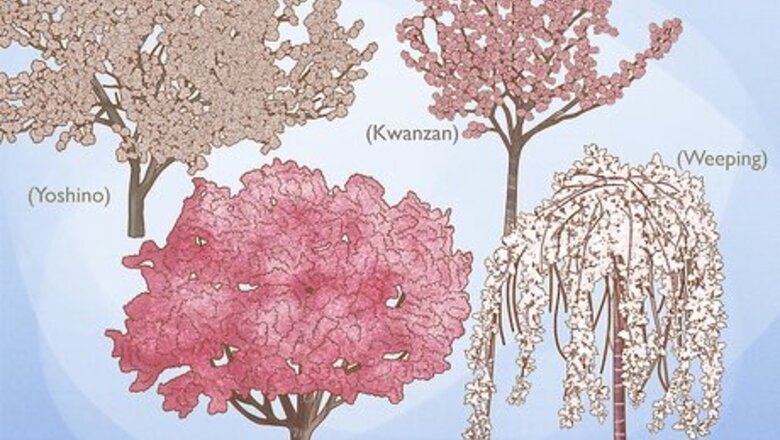
views
Selecting a Tree and Planting Location

Choose the type of cherry blossom tree you want. There are actually a variety of different cherry blossom trees available, each with different features. The Yoshino cherry tree grows quickly and has wide-spreading branches, while the Okame cherry tree has a rounded appearance and is a bit smaller. The Kwanzan cherry tree is a tall tree that provides enough space to walk beneath it and admire it's bunches of blooms. There are also several kinds of weeping cherry trees, and you can choose one by size, if you have a specific spot to fill.

Pick a spot with full sun to partial shade. In order to blossom, your cherry tree will need lots of sunlight, so choose a spot that gets at least four hours of direct sunlight per day. If possible, choose a spot that is elevated compared to the rest of your lawn or garden to keep cold air from settling around your cherry tree. Cherry blossom trees grow best in USDA hardiness zones 5 through 8.

Select a space with deep, fertile soil. The soil beneath your cherry tree should be rich and deep. It's important that the soil is moist, but well-draining. Cherry trees can adapt to several soil types, but do better in acidic than alkaline environments.
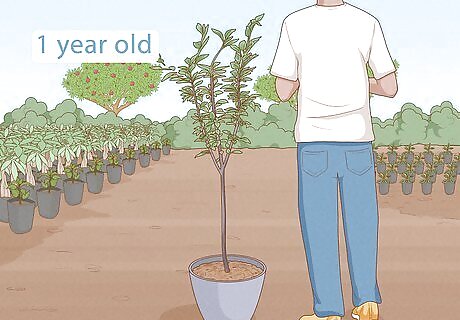
Procure a one- to two-year-old tree. Nurseries sell cherry blossom tree planting stock as young trees, rather than seeds. Choose a tree in the type you have selected that is one- to two-years-old and that has been grown in an environment similar to the one you plan to transfer the tree too (i.e. sun exposure, soil type).
Planting Your Tree
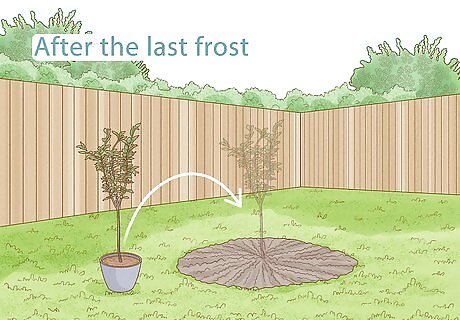
Plant your cherry blossom tree after the last frost. To ensure your new tree thrives, plant it after the last frost of the season. Do an Internet search to find the average frost dates based on your location.
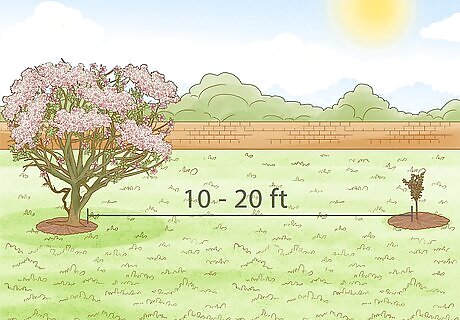
Space your tree 10 to 20 feet (3 to 6 m) from other foliage. A cherry blossom tree needs lots of room to grow. Plant the tree 10 to 20 ft (3 to 6 m) from other trees, shrubs, flowers, or foliage. This also helps reduce the spread of pests or diseases between plants.
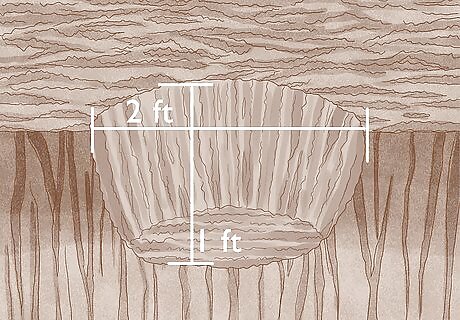
Prepare a hole for the tree. Dig a 2 feet (0.61 m) by 2 ft (60.1 cm by 60.1 cm) hole that is 1 ft (30.5 cm) deep by in your chosen location. Layer a small amount of organic matter in the bottom of the hole.
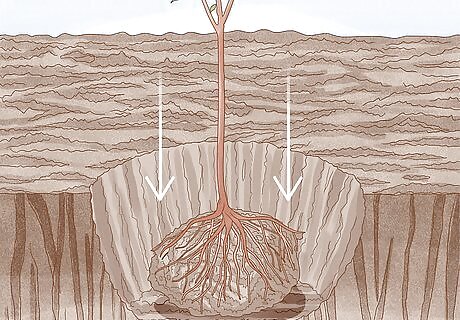
Place your tree in the hole. Carefully put your young tree in the hole. Make sure the surrounding soil is level with the top of the roots of the tree. Add or remove soil from the bottom of the hole if necessary.
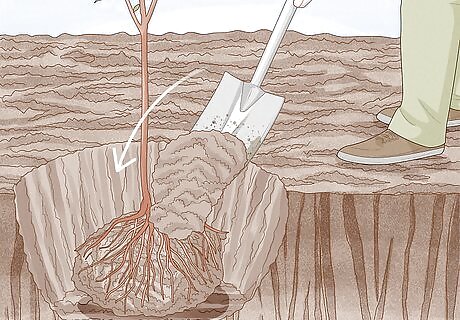
Fill the hole with soil. Mix organic matter in with the soil you removed from the hole and fill in the area around the cherry blossom tree. Level out the soil with the surrounding area and tamp it down firmly.
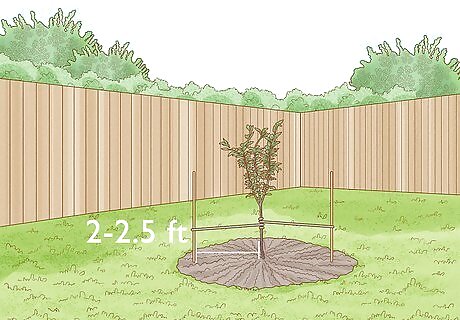
Stake the tree to the surrounding area. To reduce movement due to strong winds, use tree ties to anchor your tree to two tree stakes. Place the stakes opposite each other, 2-2.5 ft (60.1-76.2 cm) from the trunk of the tree. Attach one tree tie from each stake to the trunk of the tree, about one-third of the way up the trunk.
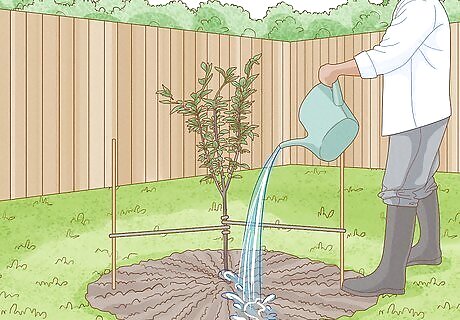
Water the tree thoroughly. Water the area thoroughly until moist to set the soil in place. Let the soil drain well, as cherry blossom trees don't do well when sitting in soggy areas.
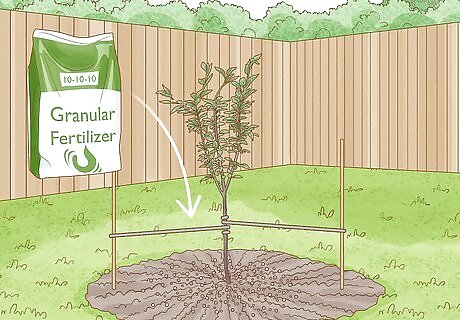
Fertilize your tree after watering. Sprinkle all-purpose fertilizer around the roots of your cherry tree. Choose a granular kind, rather than a liquid, as it will slowly release nutrients into the soil that surrounds the roots of your tree. To determine what type of fertilizer to use, pick up a soil test from any garden center. If your soil is deficient in any specific nutrients, like nitrogen, phosphorus, or magnesium, choose a fertilizer that will add more of that nutrient. Otherwise, just use a 10-10-10 all-purpose fertilizer.
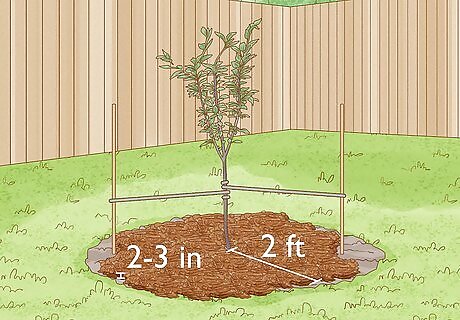
Surround the root area with bark or wood chips. Cover the root area with bark, wood chips, or garden compost to protect the roots. Layer 2-3 in (5-7.5 cm) of the material in a 2-ft-wide (60.1-cm-wide) circle around the tree trunk. This helps protect the tree roots from extreme temperature changes.
Caring for Your Tree
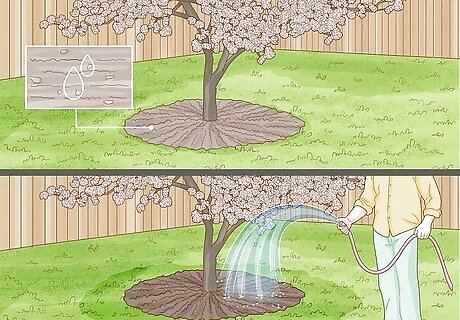
Water only during a drought. Cherry blossom trees do not require much care after planting. They will receive enough water from the natural environment, so only water them during extremely dry periods of the summer. If the leaves are wilting or the soil has begun to crack, give your tree a long drink.
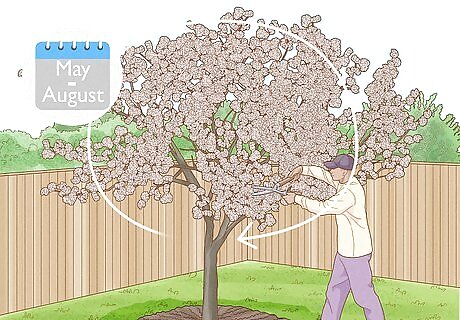
Avoid pruning your tree. There's usually no reason to prune your tree, but if you find it to be absolutely necessary, do so between May and August, which is when the tree is actively growing.
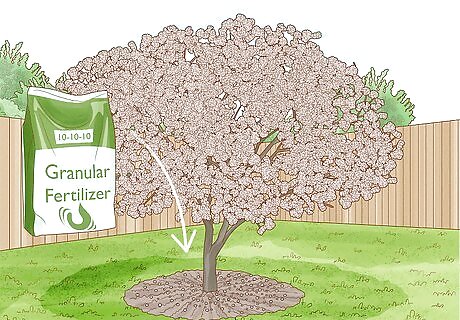
Fertilize your tree in the spring. Apply a general granular fertilizer to your tree once per year, in the spring. Sprinkle the granules around the base of the tree so nutrients can be absorbed through the root system.
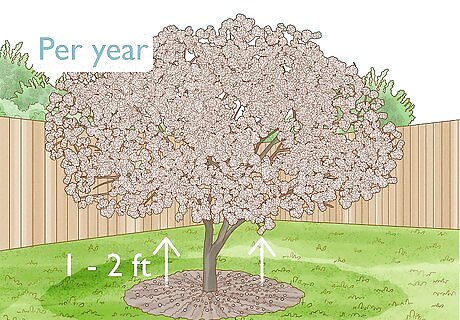
Enjoy your brilliant, beautiful cherry blossoms! Flowering cherry trees grow at a rate of between 1 and 2 ft (30.5 to 60.1 cm) per year. Even young trees will bloom, and they begin to flower at the first sign of spring, usually around April, depending on where you live.
Controlling Pests and Diseases
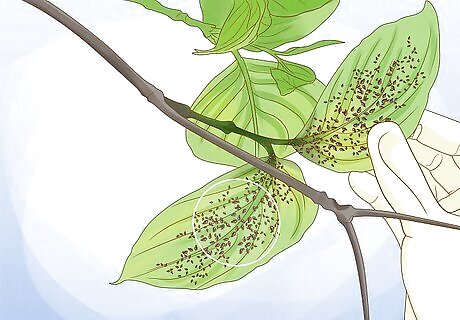
Look out for aphids. If you aren't able to see the little bugs, look out for curling leaves. Black cherry aphids leave behind secretions that infect the twigs and leaves of cherry blossom trees. Treat the tree with insecticide to remove the aphids.
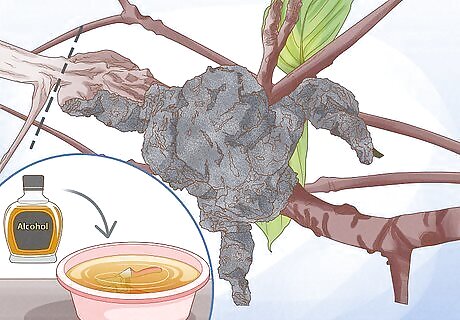
Inspect the joints and branches of the tree. If you see small growths on the joints or branches (usually light brown in color), your tree may be suffering from black knot fungus. Remove the affected branches to prevent the disease from spreading to the rest of the tree. To control fungal diseases, soak your pruning tools in alcohol after using them on an infected plant or tree. If you see branches in the spring or summer that don't have any leaves on them, it could indicate that branch is damaged.

Examine the leaves of the tree. Watch out for a gray or silver appearance of the leaves on your tree. This silver leaf fungus occurs when branches begin to die, so cut back diseased branches immediately. Watch the bark, as well. If you see white, flaky scaling, for instance, it could indicate that there's a pest living in the tree.













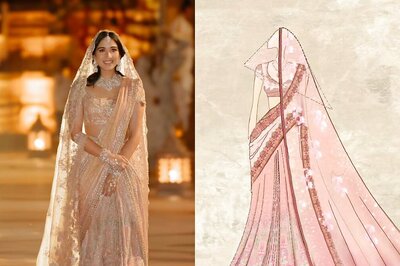






Comments
0 comment